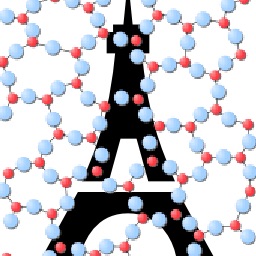Angular rigidity in tetrahedral network glasses with changing composition
A set of oxide and chalcogenide tetrahedral glasses is investigated using molecular dynamics simulations. We show that the changes in the Ge composition affect mostly bending around germanium in binary Ge-Se systems, leaving Se-centered bending almost unchanged. In contrast, the corresponding Se twisting (quantified by the dihedral angle) depends on the Ge composition and is reduced when the system becomes rigid. It is also shown that angles involving the fourth neighbor around Ge is found to change when the system enters the stressed rigid phase. The same analysis reveals that unlike stoichiometric selenides such as GeSe2 and SiSe2, germania and silica display large standard deviations in the bond angle distributions. Within bond-bending constraints theory, this pattern can be interpreted as a manifestation of broken (i.e., ineffective) oxygen bond-bending constraints, whereas the silicon and germanium bending in oxides is found to be similar to the one found in flexible and intermediate Ge-Se systems. Our results establish the atomic-scale foundations of the phenomenological rigidity theory, thereby profoundly extending its significance and impact on the structural description of network glasses.
